50 years of CALIFORNIAHIGH

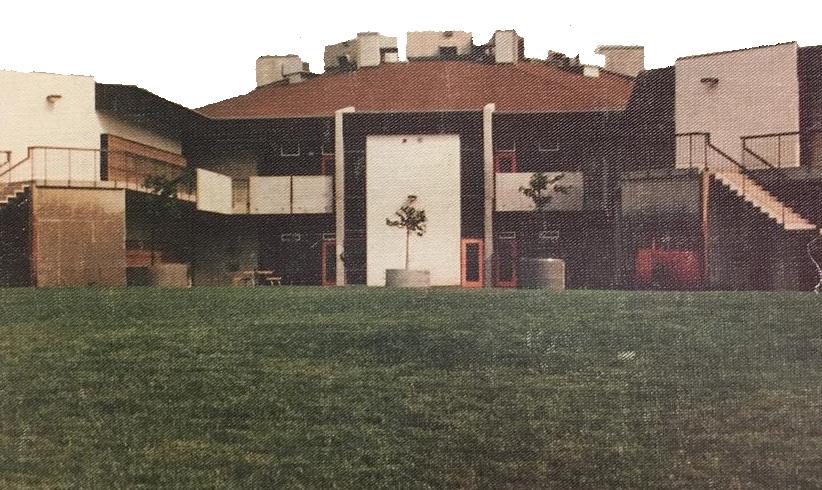
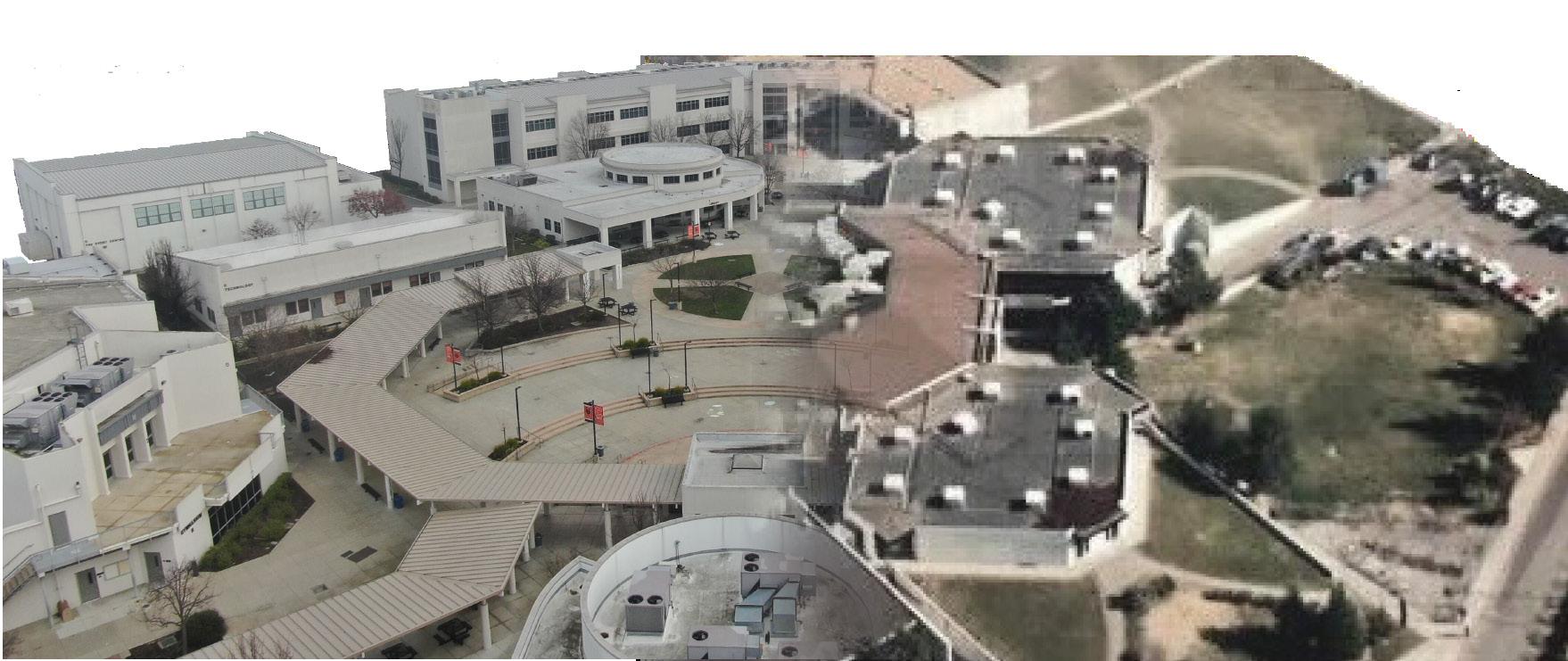
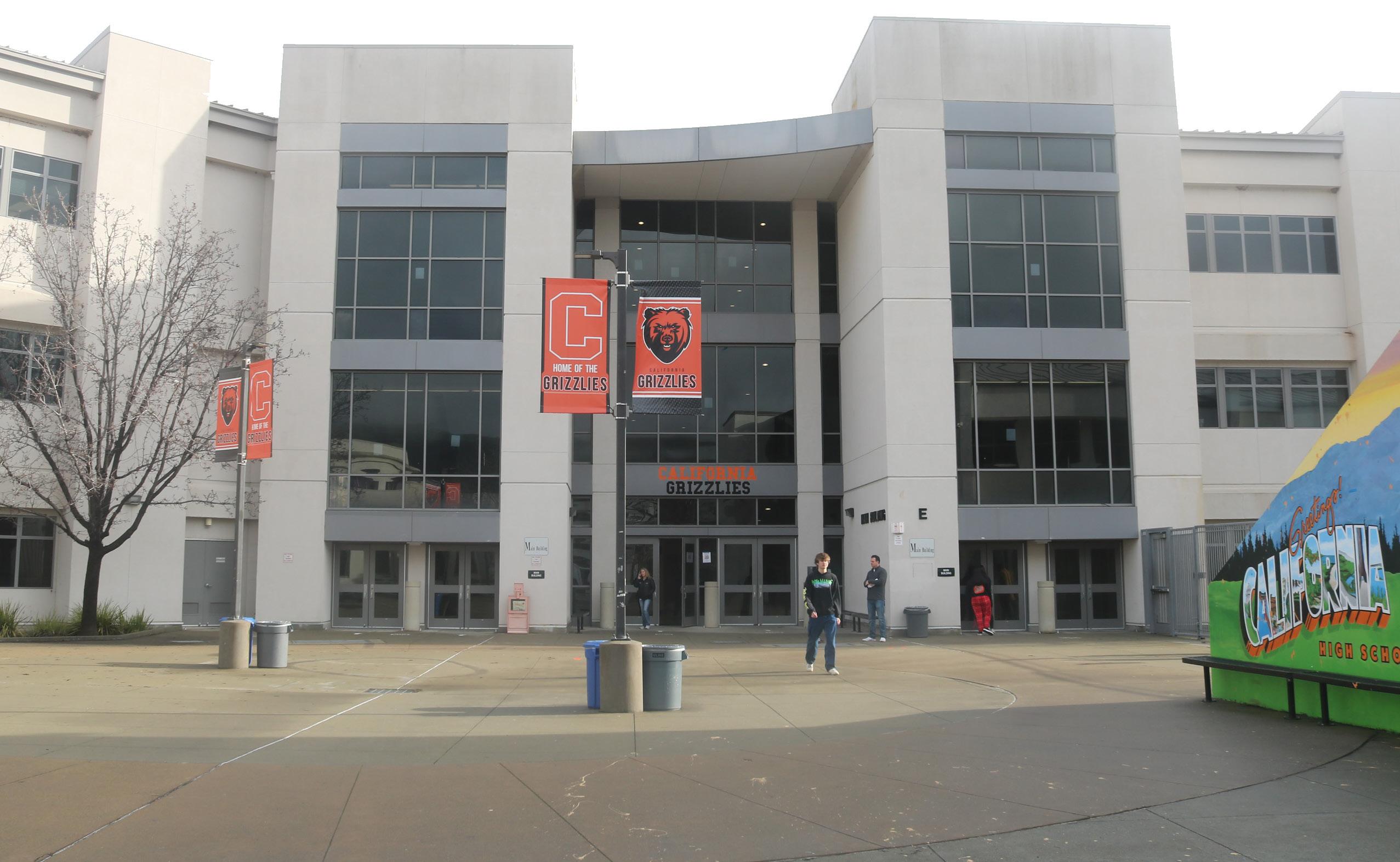





Melissa Nguyen Staff Writer built the foundation of the school’s culture, according to Cal’s website.
Fifty years ago, Cal High began as a small middle school in an agricultural area most students wouldn’t recognize today.
But over the years, Cal has transformed into a diverse and growing community of nearly 3,000 students in suburban city of about 90,000 residents today.
Cal was founded in 1973 in an unincorporated part of Contra Costa County known as the San Ramon Village. The city of San Ramon wasn’t incorporated until 10 years later in 1983.
Since Cal opened with a small number of students, it didn’t start as a traditional high school. Cal only offered grades 7-10 until 1977, when Pine Valley Middle School opened.
The first principal, Ernie Berger, who led the school from 1973 until his passing in 1983, helped the small community thrive. Berger and the next principal Phil White (1983-86)
Some early milestones included the school’s marching band performing at Chevron’s grand opening in San Ramon in 1985 and Cal offering students membership to the National Honors Society for the first time in 1984.
Some of Cal’s early staff are memorialized on campus today. Cal’s stadium is named after Berger, who passed away from cancer, and Cal’s baseball field is named after late math teacher Ed Noble.
Cal’s campus has changed dramatically in other ways since the 1970s. Today, the campus sits in the middle of a neighborhood and is open with a spacious quad encircled by modern classroom buildings. But it used to look much different.
“Cal High was not surrounded by many houses and there were not a lot of places to shop,” said English teacher
Donna Montague, who has taught at Cal since 1986 and is the school’s longest tenured teacher.
Instead of the quad, there used to be a hexagonal library at the center of campus with connected buildings on four corners. The Mountain Pod was located where the library is today. Across from it was the Desert Pod, which was closest to the back parking lot. The Valley Pod was near the commons and the final building was the Coast Pod.
Each pod was named after a different California region, which were featured around a bear in the middle of the school’s original banner.
Each pod was not built as a traditional classroom either. One room in the middle of each pod was shaped like a rectangle and the surrounding classrooms were shaped like triangles. The walls could fold up like an accordion
so classroom could be made larger for meetings or greater student collaboration.
The locker bays were in between the pods, with orange, brown and blue lockers for different grade levels. A fine arts building was built in between the Mountain and Desert Pod, with the theater opposite to it.
In the early 2000s, much of Cal’s campus was demolished and rebuilt. The pods were replaced by a quad and the main 67-classroom building and library opened in 2006-07 school year.
Many areas of the back parking lot and on campus were roped off because of construction at the time, which made campus difficult for students to navigate. Still, students at the time were mostly happy with the new development.
“I miss not having to go up so many stairs, but I like the
new [main] building,” Krisan Davidson, a 2007 Cal High graduate, said.
Campus was often cluttered with scraps and garbage from the demolition until campus construction was completed with the opening of the Event Center and theater in 2010.
“There was less walking,” 2009 graduate Madeline Simmons said. “Everyone had a place to hang out. Now we’re all mixed up.”
As the new campus was constructed, so was another high school: Dougherty Valley, which opened in 2007. The new high school was first created to help accommodate the influx of students and the growing population of San Ramon, which more than doubled from 35,303 residents in 1990 to 72,148 in 2010, according to the census.
Cal has also created fond memories for teachers.
“I met my husband here and my two kids graduated from
here,” Montague said. “I think a lot of teachers are kind of connected to the school because we have a lot of people who graduated from Cal High.” She also reminisced about some old Cal traditions.
“The staff would host a Thanksgiving dinner and teachers would cook turkeys all day long and the [other] staff members would bring in all the sides,” Montague said.
While that tradition hasn’t lasted, Cal’s annual homecoming parade and powderpuff game have all stayed the same for most of the past 50 years.
At the time the school was still taking shape in the late 1980s, the football stadium didn’t have proper lighting needed for football games at night. This meant all games had to be held before sunset, Montague said.
As the school continues to grow, here’s to another 50 years of Cal.
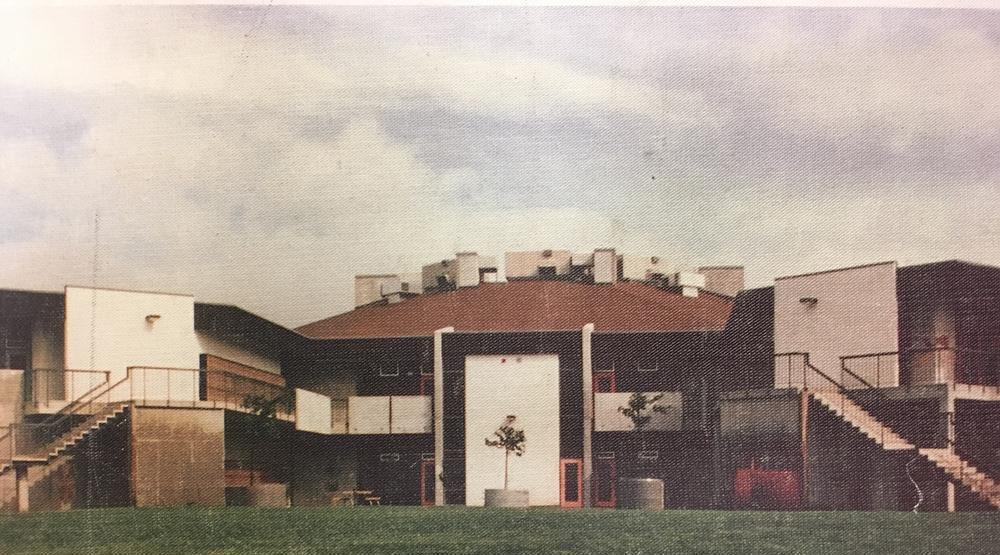
Cal High’s teachers are a huge part of the community and their experiences have shaped the school’s history over the past 50 years.
Steve Armstrong is among those teachers, having taught at Cal over five decades from1979 to 2014. He first covered for a biology class in 1976 before being hired full time at Monte Vista. Armstrong transferred to Cal in 1979 to teach many of the biology and technology related courses, including the drafting, desktop publishing and gaming classes, which are no longer offered.
Armstrong was also hired to be the head coach for cross country and track and field.
Back then, Bishop Ranch and the hills of Bollinger Canyon didn’t have homes or buildings populating them, so cross country meets used to take place through the hills and fields.
Armstrong said when he started at Cal the school had just 900 students. The campus also had a unique circular design with a library on the second floor of the main classroom building.
Four pods on the outside contained classrooms. Each pod led into the center library, which was open in the middle so students could peer down on the science classes below.
Armstrong recalled students disrupting science classes by dropping things from the library.
“[Cal’s layout] created some interesting memories of students throwing items down on the labs but at the same time fumes from the science building spread throughout the school,” Armstrong said.
Bill Pence became aware of an open job for a science teacher position from a colleague he worked with and took the position in 1976 because Cal was newer and more affluent. He taught biology, marine biology and oceanography until he retired in 2009.
In 1986, Pence became Cal’s first AP Biology teacher and taught AP biology for 17 years alongside biology and marine biology. For three years he also taught a year long course called biological research, which taught students to complete lab-based biological studies.
When Pence started at Cal, he thought the school would end up looking very different in the next 50 years than it does today.
“Fifty years from [1976]
I’d like to believe CHS, with its active affluent community involvement, would be up to date with the technology current at that time and perhaps would also be an education center for adults and for individuals seeking online classes for college education,” Pence said.

Pence went on to win California State Teacher of the Year in 1999 and was nominated for National Teacher of the Year. He earned the recognition through his dedication to his students and their scientific research.
In 1994, Pence and two of his students, Li Ho and Yu-Fong Hong, appeared on the Today Show for their work in cancer research.
Pence was a part of the Earth Club and worked with them to beautify Cal’s campus. He also took students on a three day field trip to the Catalina Island’s Marine Institute. Later that year, he met then President
Bill Clinton. Another longtime teacher, Steve Dick was the auto shop teacher back when Cal had an auto shop. D started in 1975 when a former vice principal stopped by his family’s automotive repair shop for a repair and offered him the job.
Dick said it was difficult to get funding for auto shop, but unlike most other sate high schools, a majority of Cal’s faculty supported the idea. Ernie Berger, the school’s first principal, also endorsed the classes because of his love for motorcycles.
“Our [principal] Ernie Berger was [an] enduro motorcycle
rider,” Dick said. “He [rode] the Mexico Baja 500 a few times so obviously he backed the shops and understood the importance.”
But his first year at Cal started badly when the auto shop class was burglarized before the first day of school.
“I did not have any idea what I was getting into,” Dick said. “The next day somebody broke into the shop and cleaned us out of every tool we had. Little bit of a rough start teaching auto with no tools.”
Even though the auto shop was often viewed as a class for troubled kids, Dick refused to
accept that reputation.
He firmly believed that what students learned in the auto shop would be more useful than any math formula or grammar rule because other subjects were generally useless unless a student specialized in it. Dick said what students learn in the auto shop can be applied throughout their lives, whether they work in that field or not.
Briefly, the hope for adults to be able to take classes at Cal too became reality when mechanics from local dealerships would attend a smog, brake and headlamp training class that Cal offered.
“Mechanics getting their certifications was a quick way to get a job and make a good living,” Dick said.
During Dick’s time at Cal, the district had an influx of Vietnamese students. In Dick’s auto shop class, many white students held prejudices against them to a point where physical confrontations almost started, which he had to learn how to deal with as a teacher.
“[It took] major adjustments for myself as well as the students to try and understand other cultural life styles.” Dick said
Now 50 years later, the school’s campus is much different, but Cal is still Cal. In another 50 years, perhaps current teachers’ experiences now will end up in a news article too.
Hearing Cal High teachers fondly recall their days attending their alma mater as students is not as uncommon as one would think.
Many current and former Cal teachers claim Cal as their alma mater, bridging gaps between generations. These teachers have witnessed the school evolve from a campus with designated smoking sections and classrooms separated by folding walls to what it is now.
“Being able to teach at Cal is something that everyone from around this area wants, and all the teachers, even veteran teachers, want to come to Cal,” World Geography teacher Jackson Collins said. “We have a good balance of all different kinds of people, all different kinds of cultures.”
Collins who graduated in 2019 believes that Cal is a school many teachers prefer because it discourages homogeneity by fostering diverse perspectives from different cultures.
“I think sometimes [Cal] can come across as a little cliquey,” former Cal teacher Jessica Carvalheira, who now teaches at San Ramon Valley High in Danville, said about her expe-
rience at Cal in the early 2000s before graduating in 2005. “But in reality, there’s just a lot of different communities and people that you can lean on.”
Former and current teachers agree that the diversity on campus has long been a unique characteristic of Cal.
Kelly King, a 1993 graduate who teaches Algebra 1, initially came to Cal as a chemistry teacher after deciding to move back to San Ramon after college.
“I came to Cal High because it was familiar and I lived close. There were still teachers here that I knew,” King said. “It was a very comfortable environment. I think that’s why I came back.”
Similarly, Collins said he returned to Cal because he was already familiar with it since he was a former student.
“I’m really lucky that Cal had an opening because I already have a community here,” Collins said. “All of the teachers that I had back when I went to Cal are pretty much all still here.”
Carvalheira was recruited from her university as a student teacher at Cal by former AP U.S. History teacher Scott Hodges, who was also her teacher when she was at Cal. She recalled that her experience as a first-time teacher was not as daunting as it would have been

if she had joined another school.
Many other teachers who taught Carvalheira became her colleagues, including King. Collins said that a familiar environment made being a first-time teacher much easier.
Many teachers who attended Cal said they see themselves in current Cal students, and being former students helps them relate with their students more.
King said the community
around Cal and San Ramon in general has not changed much since the ’90s, when she attended the school. She believes the community is close-knit, similar to a neighborhood which allows her to connect with students more.
Carvalheira recalled relating with students who would hang out at The Marketplace after school because she had similar experiences growing up in the
same area.
“Everyone has an experience, you know, walking down the Iron Horse Trail with friends or going to Central Park, going to The Marketplace, City Center,” Collins said. “I understand what those experiences are, so I’m able to connect and relate with students a lot more.”
Social studies teacher Chris Doherty, who graduated in 1988, said being a former student who slacked a lot helps him identify students who aren’t putting in enough effort to maximize their potential.
While Cal has remained the same over the years in many ways, these teachers have noticed various changes as well.
King remembers the buildings being much different when she attended Cal.
“Our building was a round building, and all the classrooms were next to each other,” King said. “You had these sliding doors where you could open up your classrooms if you wanted to be with other teachers.”
Before it was renovated, the school had a main building and three quads. The quads were color-coded groups of lockers assigned to different groups of students. The school was made of several large rooms divided into classrooms by curtain-like strips of cardboard and fabric.
Doherty recalled a designated smoking area at Cal in the 1980s for teachers and students who were at least 18 years old, the age they were allowed to smoke on campus.
King said that her graduating class in 1993 was around 300 students, while the current senior class is more than 700 students.
Many alumni-turned-teachers were involved in extracurricular activities at Cal. Doherty was on the basketball team, and even has his old jersey hung up on his classroom wall.
King played soccer all four years, ran track for two years and did leadership for two years.
Collins earned multiple ribbons throughout his athletic career at Cal. He currently serves as a coach for Cal’s soccer team.
Carvalheira was an avid participant of the theater program, and recalled particularly liking her theater teacher. King participated in many productions and completed all of the theater courses at Cal up until Play Production.
“In general, I think Cal High has always been a very welcoming school to people,” King said. “No matter where you come from, and I think kind of being centrally located, a lot of people are super comfortable here and I think it’s very accepting.”
Over Cal High’s 50-year history, it has been led by a roster of 11 principals who each left their mark on the school.
So where have these principals gone since leaving Cal?
Cal’s first principal Ernie Berger served from 1973-83. Berger's leadership was tragically cut short by cancer, but his impact lives on.
Cal’s stadium is named after him and there is a memorial dedicated to him next to the scoreboard at the north end of the field.
Originally, Berger led Cal as an intermediate school, featuring grades 7-10.
Vice Principal Phil White succeeded Berger from 198386, followed by Joseph Rancatore Jr. (1986-92), who passed away in 2020 at the age of 88.
Rancatore's obituary featured many comments about his
kind character. Several Cal students during his time as principal shared their stories and memories.
“His kindness and graciousness were out there for us to see and feel,” former Cal student Janice Elliot said. “He had a wonderful sense of humor.”
Maurice Ghysels assumed the role of principal from 199293, succeeded by Katie Curry (1993-95) and Rob Stockberger (1995-99).
Stockberger had worked as a teacher, administrator and coach in the district, and he was greatly loved during his time at Cal.
English teacher Ted Levey and health/PE teacher Joe Sussman both said Stockberger was a great principal.
“I felt like [Stockberger] really had a vision for the campus and for the school, and wasn’t just putting out fires,” Sussman said.
Stockberger left in February 1999, when he was promoted to the district’s director of secondary education.
But his love for the school and students never stopped.
“The piece of the job

I’ll miss is the chance to interact with kids daily, ” Stockberger said in a story published in The Californian.
Mark Corti replaced Stockberger and became the school’s longest serving principal, leading the school from 1999-2014.
Corti transferred to the school district in 1989 and created the elementary school physical education program. In 1993, he became an assistant principal at San Ramon Valley before coming to Cal.
“I hope to increase the school spirit to a higher level than it already is,” Corti said when hired. “I would also like to continue the tradition of academic excellence already present. ”
The biggest challenge Corti faced was running the school while construction was ongoing for 12 years.
With the student population growing, the school needed more classrooms, teachers and staff to keep up.

One of the major events during Corti’s time at Cal was in 2015, when a teenage girl assaulted multiple students in the quad. When school officials
tried to break up the fight, she punched Corti three times in the face and bit two school officials.
Corti now works as an interim assistant principal at his old school, San Leandro High School.
Sarah Cranford replaced Corti and worked at Cal from 2014-18. Principal Christopher George was at Cal for most of the 2018-19 school year, and now works as the district’s director of instructional services and district communications.
George said his role was to help the school transition in many ways. He believes Cal is a fantastic school and loves how it is run as a team. During his time at Cal, there was a threat posted online targeting the school.
It was later identified as a fake, but the incident deepened his appreciation for the school community,
“Just watching how the community came together to keep kids safe and how the community came together with staff to really rally everybody…to see how a community came together in a time of crisis,” George said.
George
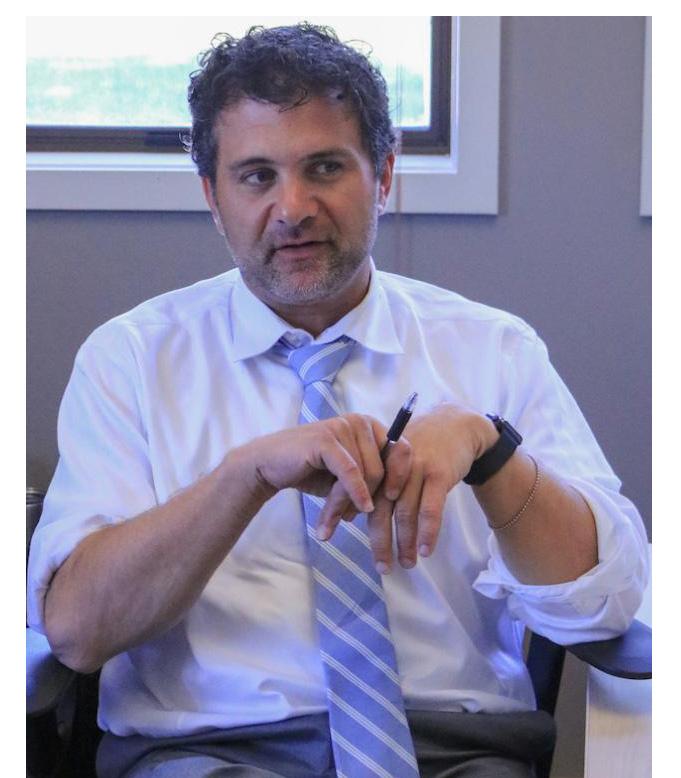
was succeeded by Megan Keefer, who was the principal at Cal from 2019 until 2022, when she stepped down from her role as principal to become an English teacher at Dougherty Valley High School. In 2023, she became the principal of Montair Elementary School in Danville.
Keefer’s first year as Cal’s principal was when the pandemic emerged. Keefer said she wanted to ensure a sense of comfort and safety for students.
One of her main projects was Cal’s student leadership class. She brought in two distinct leadership teachers who collaborated as co-instructors.
They established a Student Equity Council in response to the challenging times, particularly in the wake of the murder of George Floyd.
Keefer said she realized the need for students to have a platform and a voice and made a more inclusive and participatory culture at Cal.

This involved creating various forums for student expression along with the changes of leadership to be more student-orientated.
“We had to get creative in ways to get students to feel socially, emotionally, academically safe again,” Keefer said.
But it wasn’t just students being affected. Sussman believed Keefer was attempting to manage multiple tasks simultaneously, which ultimately proved challenging for everyone involved.
“We’ll just leave it at that [the process and problems the school faced during the COVID-19 pandemic] was tough, trying to do everything at once,” Sussman said.
Current principal Demetrius Ball is in his second year on campus. A former Army veteran, Ball was previously principal at Iron Horse Middle School.
English teacher Donna Montague said she has a good relationship with all of the principals that have come and gone since when she first started nearly 40 years ago in 1986.
Montague believes that each principal helped Cal in a different way.
“They all bring their own flavor and their strengths,” Montague said.


1973
Cal High founded in unincorporated San Ramon Village as an intermediate school serving grades 7-10.
Cal changes to a high school with grades 9-12. Rooms become wedge-shaped and separated by folding walls.
1983
1977 San Ramon becomes a city. First principal Ernie Berger passes away from cancer and the football stadium is named after him in 1984. Girl’s volleyball wins Cal’s first EBAL title.
1985
Cal’s band plays at the Chevron headquarters grand opening in Bishop Ranch.
1987
Volume I Issue I of The Californian published.
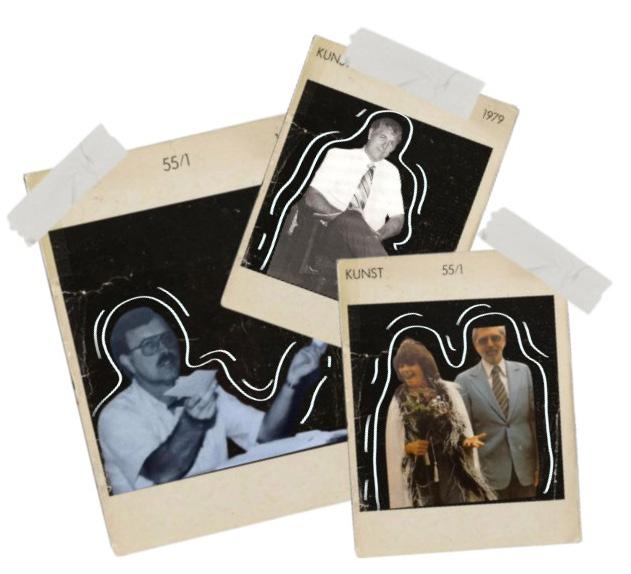
1988
First powderpuff football game held. Cal started charging 25 cents for parking permits.
1996
Block schedule adopted.

1998
Beloved math teacher Ed Noble dies; baseball field is named after him.
science, music, administration opened.
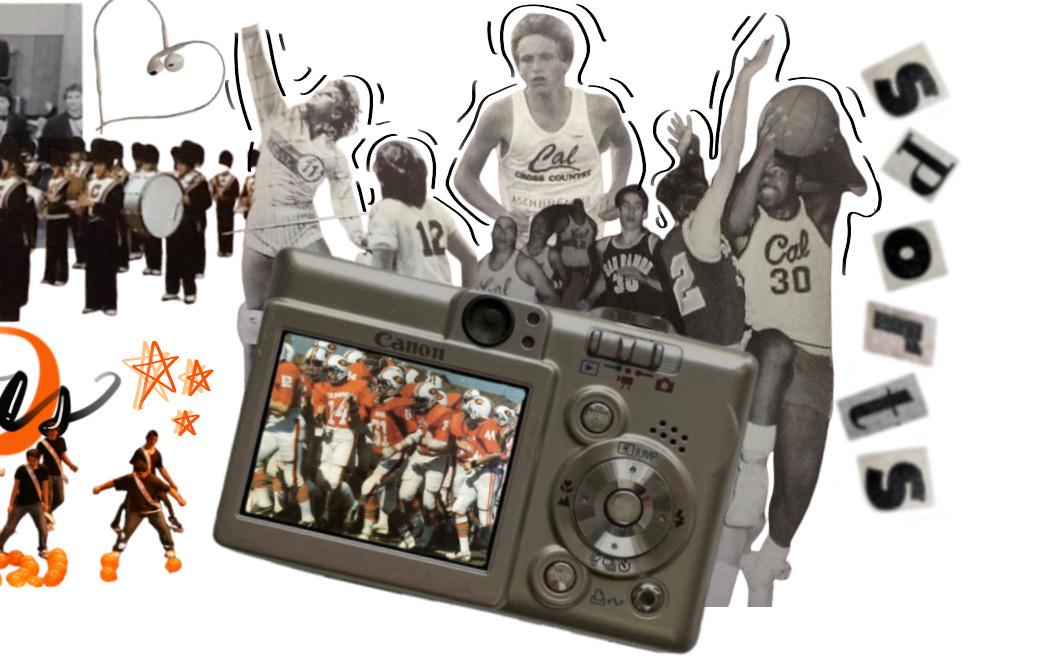
1999
New commons, science, technology, music, sports, and administration buildings opened.

2001
Mr. California pageant fundraiser begins where students bid on the 13 most handsome senior boys.
Cal begins remodeling. Old library building demolished to be replaced by quad.
2006
New 67classroom main building and library open for students.
2007
Construction on careers and technology building, quad, and counseling building is completed.
Event center constructed and theater renovated.
Back lot solar panels finished, bringing 12 years of construction to an end.
2011
2020
Cal locks down and transitions to virtual learning because of the COVID-19 pandemic.
Cal celebrates its 50th anniversary.
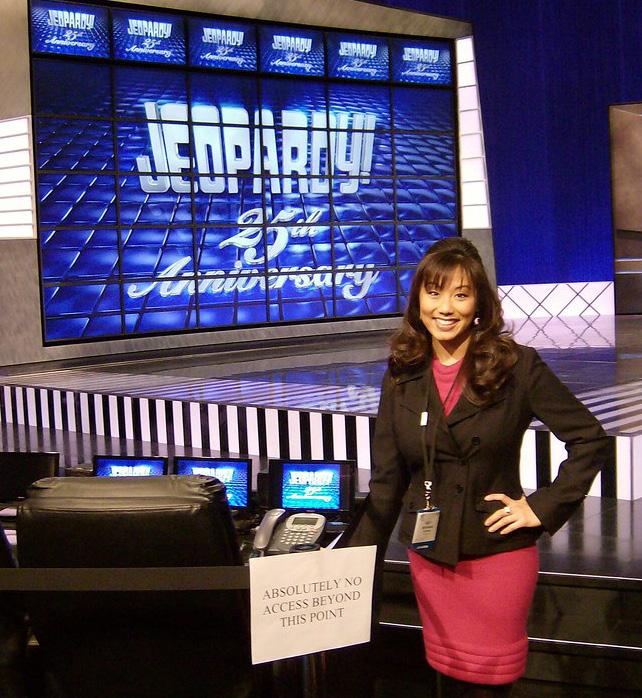
genuine personality ended up landing her the job.
It’s not everyday that someone gets to work with Alex Trebek on “Jeopardy!”
But when Kelly Miyahara got the chance to be part of “Jeopardy’s!” Clue Crew, she jumped at the opportunity. The Clue Crew is a group of people that provides clues to the contestants on the game show.
Miyahara attended Cal from her freshman to junior year. After her junior year, she moved to Virginia to finish high school.
After graduating high school in 1996, she attended the School of Business at the University of Washington.
Miyahara’s mom found an ad for an audition for the “Jeopardy!” Clue Crew in the spring of 2005. Miyahara jumped at the opportunity because “Jeopardy!” was her mom’s favorite show and she liked the idea of traveling a lot.
“They were looking for someone that is passionate about travel and interested in ‘Jeopardy!’ and game show trivia,” Miyahara said.
Miyahara auditioned with a lot of famous models who came with spiels about why they should be chosen for the Clue Crew. But Miyahara’s
Chuck Cary Cary is a retired professional baseball player who pitched in the major leagues from 1985 to 1991. He graduated from Cal in 1978 and played for several MLB teams, including the Chica-
“I was surrounded by people that were actresses and models, people who did this for a living.
I didn’t,” Miyahara said. “Everyone else had a spiel. I sort of freaked out. I had nothing prepared, so I just talked and answered their questions and was myself.”
“Jeopardy!” later called her back for their final round of auditions at the Hilton in Beverly Hills, where she would later land the job she would work at for the next 14 years.
In 2018, Miyahara’s sister and mom were diagnosed with breast cancer. They found out that their family had a mutated gene that increased their risk for breast and ovarian cancer.
The following year Miyahara was diagnosed with breast cancer herself while preparing for a preventative double mastectomy surgery.
“When [the doctors] did the testing, they found that I did have cancer,” Miyahara said. “The surgery ended up saving my life.”
Miyahara, her mom and sister were able to share their unique story on the “Today Show” in October 2023. She went on to share her story on social media so people going through a similar experience could relate.
go White Sox, Atlanta Braves and New York Yankees.
Colby Buzzell Buzzell is an American author, blogger, and former United States Army soldier who was later deployed in Iraq. He graduated from Cal in 1995 and has
David Klech is a Class of 2006 Cal High alumni who has blazed past expectations.
Beyond Cal’s campus, he has run Division 1 track for UCLA and the University of Oregon, and earned a silver medal World Youth Championships.
During his time at Cal, Klech was part of cross country, soccer, and track and field. Of all three sports, Klech believed that he was the best at track, as he was on the varsity team since his freshman year. His specialty was in the hurdles and jumps.
While on Cal’s track team, Klech set multiple school records, including 400 meter, 110 meter hurdles, 300 meter hurdles, 400 meter hurdles, long jump, and the high jump. He still holds these records today.
He also set the record for the 800 meter while at Cal, but this record has been broken since.
Being on the varsity team as a freshman comes with a lot of pressure, but Klech felt he had an amazing group of coaches and seniors that helped him.
She is currently working on a film that shares her and her family’s journey battling cancer from the very start.
“We started filming a movie. It’s going to tell my family’s story,” Miyahara said. “My mission, or goal, is to tell a story the people can relate to. I was able to connect through countless people, even some at Cal High, people that I wasn’t close to before.”
Now, she works with the United States Organization (USO), which is a nonprofit organization that supports military members, veterans and military families.
At the USO, she is able to connect US Army soldiers with famous celebrities around the world. Through this program, US military soldiers are able to look forward to something.
Through this, she has been able to meet multiple famous people including Snoop Dogg, Chris Evans, Ryan Gosling and many more.
Through a friend at Sony, Miyahara has also been able to work as a host on the world’s first Live Play Bingo app with hosts. Live Play Bingo is an app where people can play bingo against themselves or other people 24/7 with live hosts.
written three books, including “My War: Killing Time in Iraq”, “Lost in America: A Dead End Journey” and “Thank You For Being Expendable”.
David Bingham
Bingham graduated from Cal in 2008. He is now a professional soccer player and a goalie for Charlotte FC. Bingham played college soccer at UC
During his freshman year, Klech and three seniors qualified for the 4x400 meter relay for the NCS Champion ships and won. Klech felt that the support he received from the seniors on his team was really helpful.
“It was definitely a huge confidence boost er, showing myself I could compete at this level,” Klech said.
Klech feels that his coaches also played a tre mendous role in his success, encouraging him in events he was already good at and helping him improve in events he wasn’t that great in.
“I was really fortunate to have an incredible group of coaches while I was at Cal High,” Klech said. “They transformed my career. They showed how coaching can make an impact on a student-athlete’s life outside of just the athletic element.”
Klech qualified for the CIF State Meet all four years of high school by placing top four at the NCS Meet of Cham pions. The State Meet is a state meet features schools throughout California.
“Qualifying for the Cal State Meet is a pretty big honor,” Klech said.
In 2005, Klech participated in the Arcadia Invitational and won the 300 meter hurdles. He still holds the record for this event today.
During his junior and senior years, Klech was a state champion in the 300 meter hurdles.
In his final year at Cal, Klech was name the Gatorade National Track and Field athlete of the year. This award is given annually to high school student athletes to recognize their academic achievements and athletic excellence.
But Klech’s accomplishments don’t end there.
“Probably my biggest ac
complishment on the world stage was winning the 2005 World Youth Championships silver medal in the 400 meter hurdles,” Klech said.
After graduating from Cal, Klech went to run Division 1 track at UCLA, but after dealing with multiple obstacles he felt he needed a change.
“I battled a number of injuries during my freshman year at UCLA and felt I needed to choose another institution to achieve both my academic and athletic goals,” Klech said.
After transferring to University of Oregon to continue his career, Klech felt like he found the place that was right for him.

Berkeley between 2008 and 2010. Bingham led Berkeley to the quarterfinals of the NCAA tournament in 2010. He also earned All-Pac 10 second team honors in 2009.
Ryan Wright Wright is a punter for the Minnesota Vikings. He graduated from Cal in 2018. In Week 6 of the 2022 season, Wright
was named NFC Special Teams Player of the Week for the first time in his career.
Alyssa Brewer Brewer graduated from Cal in 2018 and attended the University of Southern California. While attending Cal, Brewer was a Junior Olympic track and field champion in the 800 meters in 2016.
“The coaching staff at the University of Oregon did a great job in rehabbing me back from injuries,” Klech said. “I was able to earn All-American honors and graduate with two masters [psychology and educational leadership and administration] degrees during
During his time at Oregon, Klech won three conference championships.
He graduated as a two time All American and first Team Academic All
After graduating from the University of Oregon, he was inspired by his high school coaches and started coaching the track and field team at University of Oregon for two years.
While coaching there, the college won the womens’ NCAA Indoor Track and Field Championship titles in 2012 and 2013.
“The ways [my high school coaches] transformed my life, I definitely felt like it was something I wanted to pursue
Klech took a break from college coaching between 2014-2016 to pursue a temporary professional career in track.
During his time as a professional athlete, he was the runner up at the 2012 United States of America Track and Field as the indoor champion for the indoor heptathlon, which includes the 60 meters, long jump, shot put, high jump, 60 meter hurdle, pole vault, and 1000 meters.
Today, Klech is coaching at the University of California, Santa Cruz and has been for the last seven years. Klech was a phenomenal athlete during his time at Cal and is looking to make the same impact on
In December, 2007 Cal High graduate Ashley DeWitt became a Children’s and Family Emmy winner for Outstanding Voice Directing for the animated Netflix show “Ada Twist, Scientist”.
DeWitt was the voice and casting director for the show. Her path to becoming an Emmy winner started when she was in high school at Cal, where she joined play production and choir. During her time in Cal’s drama club, DeWitt was the stage manager for the plays “Dearly Departed” and “The Laramie Project”. She portrayed Mrs. Gibbs in the play “Our Town”, and Gertrude McFuzz on “Seussical”.
“Being able to do [drama and choir] in high school and being able to explore singing and acting in high school helped me continue my passion,” DeWitt said.
During the casting of “Ada Twist, Scientist” DeWitt watched hundreds of auditions. She shortlisted the best ones which were then given to executive producers to be reviewed.
After graduating from Cal, DeWitt attended Cal State University of Northridge, where she majored in theater.
While in college, DeWitt interned at a commercial casting company until she realized she didn’t like working in commer-
cials, so she applied to work for DreamWorks.
DeWitt started working at DreamWorks in 2016. There, she worked in their casting companies and helped schedule actors for recording sessions.
While at DreamWorks, DeWitt found her passion for voice directing.
DreamWorks is also where DeWitt met Kristi Reed, who was a voice director. After leaving DreamWorks in 2018, DeWitt worked for BlazeCon, a video game convention and helped with their talent management.
DeWitt was working at BlazeCon when Reed reached out to her, asking if she was still interested in voice directing. DeWitt then left BlazeCon, and became Reed’s assistant.
DeWitt helped Reed cast for projects and scheduling. It was with Reed that DeWitt started to learn her new craft.
“[Reed] also taught me how to voice direct, while introducing me to other studios,” DeWitt said. “She introduced me to the people at Cartoon Network.”
In 2020, Reed got offered to cast and direct anti-racism shots for “Steven Universe”, but passed the job along to DeWitt. Reed believed that these shots would be important for DeWitt as she was a woman of color.
The anti-racism shots for “Steven Universe” marked DeWitt’s first break as a voice director.

“I ended up being the casting and voice director for that show,” DeWitt said. “I got to cast the kid actors in that, so I
helped them find those kids.” Chris Nee, creator of “Doc McStuffins” and “Vampirina”, reached out to DeWitt after her
job with “Steven Universe”. Nee was looking for a voice and casting director for a new show, “Ada Twist, Scientist”.
DeWitt was interviewed at Netflix, where she got the job. Working as a voice director for “Ada Twist, Scientist” allowed DeWitt to cast an entire series by herself.
“Ada Twist, Scientist” started recording in 2020 and wrapped at the end of 2022.
When she learned news of the nomination on Nov. 2, 2023, DeWitt and the rest of the show’s team couldn’t believe it. DeWitt knew the show had been submitted to be nominated for an Emmy, but didn’t expect it to actually happen.
“I don’t do my job for that,” DeWitt said. “It’s so cool to be recognized. It’s an honor truly.”
Even though the show revolves around science and some terms could be technical, DeWitt said there are important themes reflected in the show.
“The show is about the emotions behind discovery,” DeWitt said. “It is okay to fail and it’s OK to try again. It’s OK to take a moment to look at all the possibilities to make informed decisions, and that’s an important message, especially for preschoolers. Especially the message that not everything is perfect.”
DeWitt later posted on Instagram, “I am so beyond proud to have been nominated for an Emmy for my first animated series as voice director. Working on ‘Ada Twist’ was such a dream way to debut, and I can’t wait for what the future holds.”
Becoming a dance choreographer on Broadway is not an easy feat, but 1998 Cal High graduate Alicia Albright has found success as one.
Albright is a dance captain for the “Wicked” and “Frozen” Broadway shows.
During her time at Cal, Albright was involved in sev eral activities, including choir, drama, marching band, dance team, and cheer.
Albright started dance at the young age of five and attended the San Ramon Dance Company until she left for college. At the local academy, she found one of her many mentors, Jennifer Berger.
“[Berger] believed me when I didn’t believe in myself,” Albright said.
Albright said her passion for dance has been almost therapeu tic for her.
“Dance has always been something that has made me feel better, kind of like therapy. I didn’t know that’s what it was at the time,” Albright said. “I didn’t know how to express myself through words, so dance helped me express what I need ed to say.”
Albright’s former choir teacher, Lucerne Mottaz, helped Albright get to where she is now. Mottaz was her choir and band teacher for six years in middle and high school. She
helped Albright with her dance applications for college.
“Ms. Mottaz was the one that told my mom that your daughter needs private voice lessons,” Albright said. “She [said I] can go further in life and become a choreographer.”
With Mottaz’s support, Al-
Students are able to live in New York for some time and meet Broadway actors. Albright has been a teacher for this program for the past 10 years.
“[During the program] was the first time I worked with Broadway people and it was very inspiring,” Albright said.
way], but it solidified this even more, to be one of them. And now I am!”
Albright acknowledged that she was only able to get to where she is now with the help of others along the way.
“It was all these mentors that helped me along the way.

Ms. Mottaz was a really big mentor. At UC Irvine, Donald McKayle was my
After graduating college, Albright had the opportunity to participate in multiple smaller musicals including “Jesus Christ Superstar”, “The Chorus Line”, and “7 Brides for 7
Albright was a swing both times in “The Chorus Line.” As a swing, she had to understudy various roles. The first time she understudied all the roles and the second time she understudied three roles.
The first time Albright performed on “Jesus Christ Superstar” she was part of the
ensemble, and the second time she was part of the ensemble as well as a dance choreographer.
For “7 Brides for 7 Brothers”, she played the lead role, Millie, the first time and was part of the ensemble the second time.
Albright performed in these smaller shows for a while before she finally got her big break when she got an opportunity to be a part of the cast of a national tour for “All Shook Up”.
While a part of “All Shook Up”, Albright was a swing that covered everyone in ensemble as well as an assistant dance captain. The musical follows the different storylines of unlikely people falling in love, while crossing color boundaries. Albright described the show as really fun as it was set to Elvis music.
Performing a national tour opened up many doors for Albright, including the opportunity to become a dance choreographer for Broadway shows such as “Wicked” three times and “Chicago the Tour”.
Finally, in 2010, Albright performed on Broadway and performed there for five years before going to Bali to take a break. As a part of the musical theater industry, she (and any other Broadway actor) has to know how to act, sing, and dance.
Albright made her debut Broadway on “Wicked” as a dance captain swing. She had already been on the production
crew, but her role on the Broadway production opened up and the job was offered to her.
In Bali, Albright found her passion for underwater dancing and created an underwater dance video.
Albright went to Bali for a yoga retreat where she surfed, meditated, and wrote to find her life’s purpose.
Through this, she did an exercise for finding words for a life purpose phrase. Not knowing what to say in words, Albright resorted to dance to express herself.
One day, while snorkeling, Albright came up with the idea to make an underwater dance piece. After coming back to the United States, she filmed the dance piece in Pennsylvania in her friend’s pool.
“The piece signified the times in your life when you are really sad and wanted to give up, but you remember there’s more to life,” Albright said. “This video was kind of like a new beginning for me.”
After going back to New York, Albright joined the original Broadway cast of “Frozen”. She was on the original cast list and had the opportunity to dance again.
During the course of her acting career, Albright learned how tenacity leads to success.
“Keep auditioning for the next thing,” Albright said. “You never know what’s gonna happen.”
I am a lover of history. I am a lover of Cal High. I am a lover of the newspaper.
So, when I heard of this 50th anniversary (HISTORY!!!) edition for Cal, there was only one thing I could do in good conscience. I went to the corner of the newsroom, Room 321, and I dove into The Californian’s archive.
I read through many, many old papers to find the best highlights for you. So, sit back, relax, and enjoy this romp through the wild history of Cal through the eyes of The Californian
I started at the very beginning: Volume I, Issue I, printed Jan. 30, 1987, 14 years after Cal was founded.
Printed on orange paper with black text, I quickly felt Cal nationalism well up inside me. But what really dragged me into a nostalgic stupor was a drag from a cigarette. The very first headline story of the paper’s history started out strong: “No Smoking, Please”.
In this story, a new California law banning smoking in schools was introduced. Administrators clamped down on our God-given right to smoke, enforcing penalties like suspension and “work detail” (very authoritarian). This was the last gasp of a free Cal, as smoking was now banned on campus.
“Watering the tree of liberty with the blood of patriots and tyrants,” anyone?
But that wasn’t the first time Cal involved itself in the world of politics.
The next paper I read, Volume VII, Issue II (Dec. 18, 1992), brought a treasure trove of political insight.
On the first page, a brave reporter silenced the crowds on the controversial issue of gun violence with an exclamation: “Stop killing each other!”
Tell the candidates to
bring that one to the next presidential debate.
The best headline in the issue inspired me personally.
On Page 2, under “Get ready for four with Clinton and Gore”, I saw President Bill Clinton and Vice President Al Gore beckoning with radiant smiles, sparking a rare sense of warmth within me.
President Clinton promised, “an attempt will be made at eradicating the multi-trillion dollar deficit.”
Well, an attempt was made. But maybe nobody told Bill to avoid using such absolute language in politics.
But in the next edition (Volume VII, Issue III, February 12, 1993), The Californian already seemed sick of the new president, running the article “Slick Willy is overblown”. Unenchanted by ol’ Bill’s saxophone, the author writes, “From what I’ve read, [Bill Clinton’s] life is an endless party.”
Though I love Bill, I’d had enough of politics at this point. So, as I continued closer to the present, I found a new focus: The Californian’s wonderful old advertising.
The first ad that caught my eye was a small blurb on Volume VI, Issue III (Dec. 20, 1996) announcing “Pots for sale!” The Pacific Bell company had donated 1,500 clay pots to Cal for who knows what reason.
Probably in a solely polite gesture, we started to sell them for $8 to $15 a pop (back in 1996, $1 was worth nearly two of today’s dollars). As of 1996, the school raised $12,000 from this Ponzi scheme.
Moving closer to the present, in Volume VII, Issue I, printed Oct. 10, 1997, underneath a picture of a displeased-looking linebacker, was an ad that asked the question we’re always worrying about: “THINK YOU’RE PREGNANT?” If so, Valley Crisis Pregnancy Center can help!
The company offered “confidential” and “free” services such as pregnancy tests, medical referrals, and post-abortion counseling. Call today!
Volume VII Issue V (Feb. 27, 1998) had some real gems. The government was trying to get us young back then because it was making big promises to get teens to join: “ARMY. BE ALL YOU CAN BE.”
The ad promised “self-confidence”, “discipline”...and up to $40,000 of financial aid for college. Back when that actually paid for a college education. Brings a tear to the eye.
A full color paper advertisement assaulting the senses with a neon vomit color scheme fell out of that same issue. It was for a rave at “The Zone”. For just $10, you too can come down to “The Zone” for New Year’s Eve to celebrate the coming of the new millennium with your “New Year’s DJs” playing your favorite “hip-hop” and “hi-nrg” music. “Dress code strictly enforced.”
Enamored by the advertising, I almost glossed over an old friend in the Oct. 10, 1997 issue: cigarettes. Apparently, not all is lost for the adorers of the lovable white and brown sticks, because they were still making rounds in the news eight years after their ban.
Some of the evidently libertarian student body continued to resist the oppression of smoking. In the next story of note, “New tobacco law affects students”, a new California law states police must be notified if any tobacco products are seen, sold, or even smelled emanating from a boy’s restroom on a school campus (not to say the cops wouldn’t be called if smokers were gathering in the girl’s bathroom, however.)
Backed into a corner, the Cal patriots submitted to a life of greatly reduced risk of lung cancer. All was not lost though, because the school compassionately created a


class for nicotine addicts to help kick their habit and warn non-smokers of the danger, available in the far future of Dec. 15, 1997.
As I entered the 21st century and neared the end of my journey, I noticed a trend: crime. While you may believe humanity has become more peaceful over time, I have irrefutable evidence (five school newspapers) that we seem to be on a backslide into barbarism.
After an exciting, colorful, and conservatively-dressed hailing in of the new millennium at “The Zone”, Cal started off the 2000’s with a trademark controversy in Volume X, Issue III (Dec. 18, 2000) in the article “Why was a sex offender coaching at Cal?” In this lovely story, a convicted sex offender was allowed to coach women’s soccer for four years.
The 58 year-old man first weaseled his way into the program as a volunteer, since volunteers didn’t need to be fingerprinted back then. If the district checked, they would find that he had been convicted of indecent exposure six times.
Instead, it took a high profile arrest for his possession of child pornography to get people to realize that this dude shouldn’t be coaching teen girls’ soccer.
The police planned a sting operation to get him, planning to have a “young, female officer” walk by and arrest him when he inevitably did something disgusting, but before the plan could be put in motion, he exposed himself to a random 12 yearold girl from his car.
Moving past sex offenders, we find that students have found a new pastime in Volume XVII, Issue I (Oct. 4, 2007): thievery. In the story “Campus thefts plague students once again” (“again”?), we learned that an epidemic of burglaries had been sweeping campus.
There is some serious theft in the story, like the instance when people broke in and stole $700 worth of iPods and phones from the band room. But others are just really confusing.
The first incident described is of a poor freshman, who, on his second day of school, had his locked locker broken into. A thief had jimmied open the lock and made off with two books and three binders, along with the lock itself. Why in the world would anyone want those things?
By the end of the story, Rob Ransom, the school resource officer at the time, provides some sage advice to avoid these thefts: “Don’t
bring stuff to school.”
Yeah, alright, Robert. I’d like to end this story with a bang. The Volume XVIII, Issue I (Oct. 2, 2008) story “WWII bomb scare defused” describes just about the most ridiculous story of a threat of injury possible. In this last article, a World War II-era rocket propelled grenade (that’s bazooka ammo) was dug up near Coyote Creek by Walt Disney Elementary School, because of course it was.
Students from Walt Disney, Pine Valley Middle School and Cal were shepherded away from the Iron Horse Trail as a bomb squad dealt with the explosive. There’s no definitive answer where it came from, but our old friend Officer Ransom’s theory was that some genius found a bomb in their home and decided to dispose of it by burying it near an elementary school.
From decade-long smoking controversy to the sale of 1,500 clay pots to dissing Bill Clinton’s saxophone abilities to WWII bombs being planted not far from home, Cal’s history is just as wacky as its present.
Thank you for taking the walk down memory lane with me to see just how well The Californian has recorded our annals for the ages.
